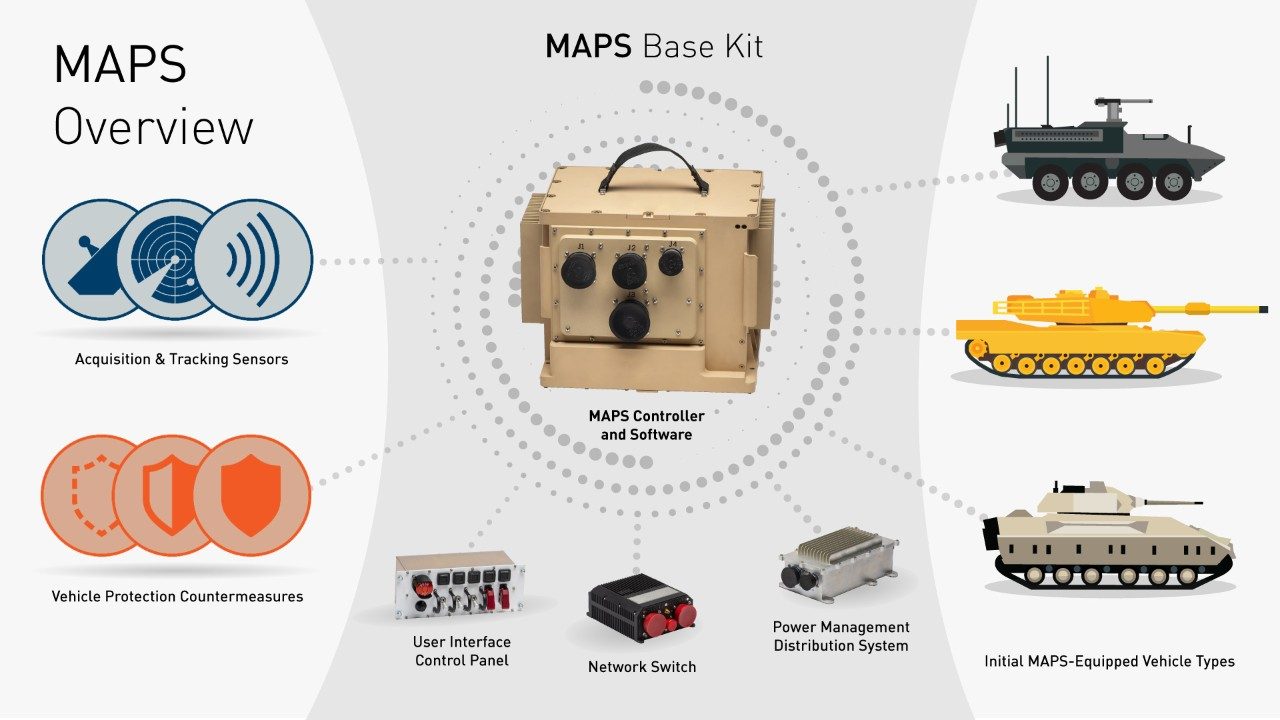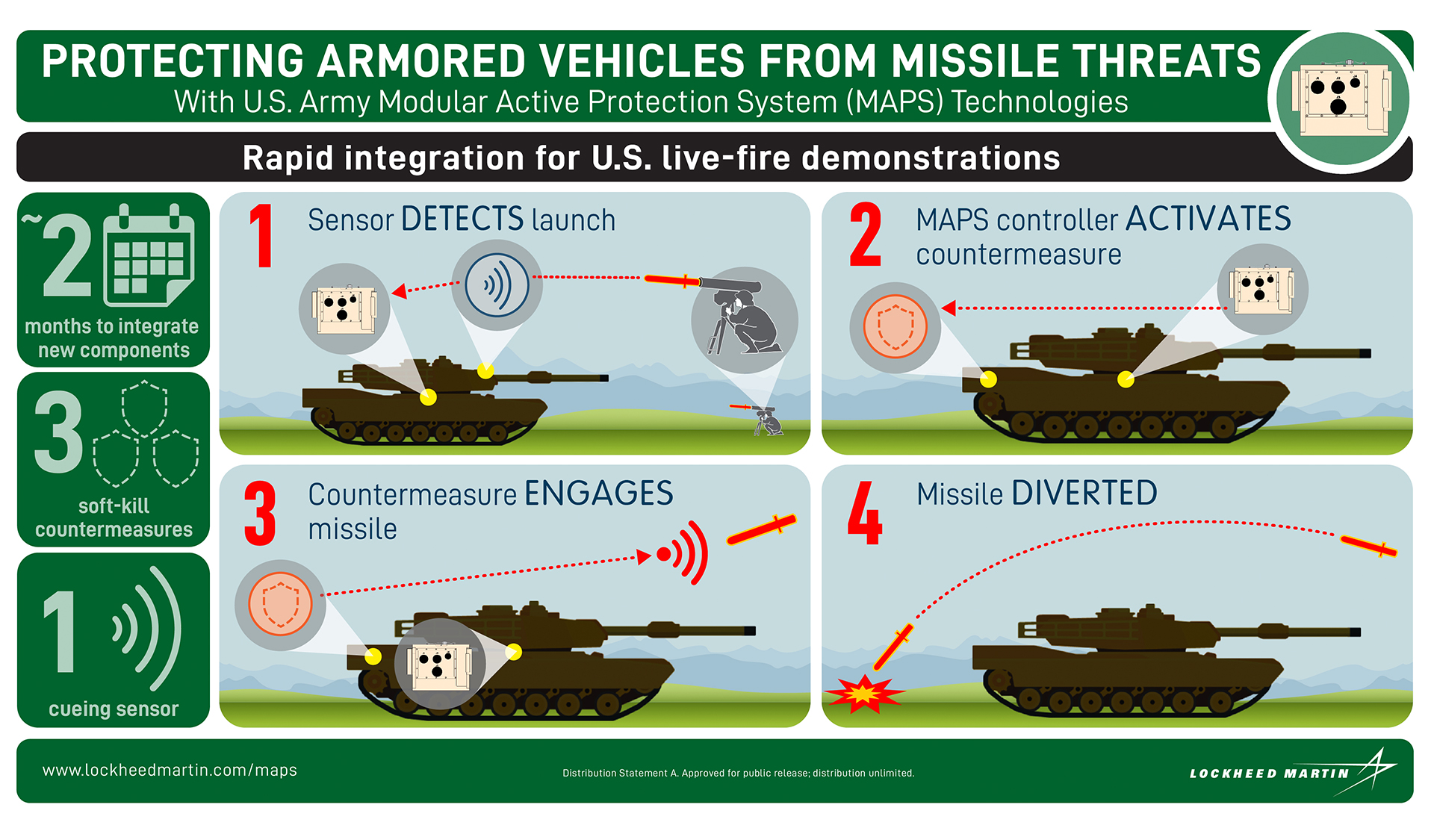Modular Active Protection System Integration for US Armored Forces
The recent award of a $30 million contract to Lockheed Martin will result in the company integrating the Modular Active Protection System (MAPS) into the variety of US Army vehicles. This includes M2 Bradleys, AMPVs, Strykers, and M1A2 Abrams MBTs.

MAPS is an open-architecture processor that links sensors and countermeasures to provide platform protection against current threats and rapidly upgrades to meet emerging ones.
Over the next 36 months, Lockheed Martin will be tasked with the delivery of five production-ready base kits with an option to deliver up to twenty such kits. The contract also contains a development of a base kit for vehicle protection capabilities beyond active protection, such as underbelly blast protection.

The contract will be the first attempt to integrate MAPS with the Stryker, Abrams, and AMPV platforms. The US Army seeks a new open-architecture solution to protect its vehicles and crews, however, in the meantime the Pentagon has been forced to resort to temporary use of other platforms, such as Israeli Iron Fist APS. The modularity of MAPS increases the possibility of its implementation in other vehicles as the system can be plugged in or out easily.
The earlier tests of MAPS conducted on the M2 Bradley platform were very promising. During the live-fire test in 2019, MAPS was able to defeat 100% of anti-tank guided missiles fired in the direction of the vehicle. Besides that Lockheed Martin claims that its engineers managed hardware and software integration of an Ariel Photonics countermeasure into the MAPS framework ahead of the tests. They also supported U.S. Army Combat Capabilities Development Command Ground Vehicle Systems Center efforts with BAE Systems and Northrop Grumman in integrating two other countermeasures.
There is still a very long way before MAPS will be fully introduced into the service, with it is unlikely for Lockheed Martin to be ready to deliver a complete product service-wide before 2030.

